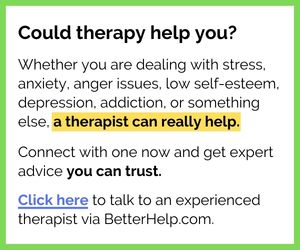“Every single day feels exactly the same. I’m not even sure what I’m doing all day long. I’m just going through the motions.”
Have you ever experienced any of these thoughts or feelings? If you have, you’re most certainly not alone.
Some refer to it as living on “autopilot”; others describe it as just going through the motions of living but not actually being present. Whatever you call it, it can seriously affect your mental health and well-being. It can lead to anxiety, depression, and feelings of isolation.
This article will briefly outline a few common signs so you can recognize what living on autopilot might look like, and then explore what you can do to improve this feeling. Make sure you take notes and read to the end so you can find out how to stop living on autopilot.
Not sure if you’re living on autopilot? Check for these signs:
- Your life is very predictable each day.
- You’re mentally checked out.
- You struggle to remember details.
- You do things without thinking.
- You overcommit yourself.
- You dread the day ahead.
15 Tips To Turn Off Your Autopilot
Once you’ve recognized the signs, you can work toward making changes. First, acknowledge that you’re on autopilot and then create a plan to get out of that headspace.
Go through this article right until the very end so you can take note of all 15 tips and how they can be applied to your life. Then, it’s time to step back into the driver’s seat and regain control.
And don’t be afraid to speak to an accredited and experienced therapist to help you explore why you feel like you’re stuck on autopilot and what you should do about it. You may want to try speaking to one via BetterHelp.com for quality care at its most convenient.
1. Increase your self-awareness.
Picture self-awareness like a muscle. You must make an effort to practice it in order to develop the strength to do it. Although it takes some effort, it is essential to get off autopilot if you want to become the best version of yourself.
When you increase your self-awareness, you bring a focus onto your internal narrative and your thoughts, feelings, and values. Developing self-awareness takes courage and humility. You must be willing to sit in the discomfort so as to identify its source.
Then you must allow the discomfort to exist and learn how to handle it. Self-awareness can help you recognize the signs of living on autopilot so you can identify what steps are needed to make a change.
Becoming a more self-aware person holds many benefits besides feeling more in control of your life, fastening your seatbelt, and being the driver; the benefits of self-awareness flood all areas of life. For example, it can improve relationships and communication skills, decrease stress, and help avoid emotionally driven conflicts.
Increasing your self-awareness will help you identify which parts of your life are bringing you joy and which parts are weighing you down. However, at the core of self-awareness, you’ll find self-reflection, another muscle that needs to be trained.
Self-reflection is the process of accessing your own thoughts, feelings, emotions, and values. Picture looking into a mirror, but rather than seeing a physical reflection, you’re faced with what’s on the inside.
Practicing self-reflection regularly can help ensure you’re not functioning on autopilot but rather making choices that support a joy-filled life. It can help you process your feelings, thoughts, and values and evaluate what changes need to be made to better yourself as well. Through self-reflection, you can increase your self-awareness and make changes so you don’t just exist in life but live it fully.
How can you increase your self-awareness?
- Practice staying present and in the moment. This will help you identify various emotional triggers and explore your responses to them.
- Notice your feelings.
- Investigate what your triggers are.
- Identify patterns of thought, behavior, and emotions.
- Increase your self-curiosity and learn about yourself further.
2. Find your internal compass.
When we’re living on autopilot and every day is the same, we often lack direction and motivation. Take some time to find your internal compass and reset your life, so you live harmoniously with it. Ask yourself questions like, “What do I want out of life? Where do I hope to be one year from today? What is my life lacking?”
Your internal compass is what guides you through life. If you’re living on autopilot and just going through the motions, it’s time to take a step back and connect with yourself.
Not sure if you have an internal compass? Don’t worry, you do. But you might have to silence the noise and dig deep into yourself. Your internal compass is what strengthens the relationship between your physical being and your soul. It can help you steer through life and make decisions, and it can give you a sense of where you’re going and why.
Picture it like an internal guidance system. Your internal compass can help you regain control of your life and live it with intention and meaning. It helps you become more connected with yourself. Instead of looking out at the world for answers, you’ll turn inwards.
It’s not just about finding your internal compass but also learning to trust it. You must learn to listen to what it says and trust that it’s guiding you where you need to go. In challenging moments where you feel unsure and overwhelmed, remind yourself to turn inward and hear and feel your internal compass.
Sit with your feelings and worry less about what others think of you. Instead, put your focus on what you think of yourself. Notice your feelings, pay attention to what triggered them, and make a habit of turning inward.
When you tap into your internal compass, you’ll stop living life on autopilot and, instead, start living authentically. Your internal compass is like a guidance system constantly offering you information about yourself and your feelings, but we need to slow down, get quiet, and allow it to guide us.
Listening to your internal compass takes consistency and effort. It might give you information you’re uncomfortable with or urge you to leave your comfort zone and explore. This is where trusting yourself becomes integral.
3. Push beyond your comfort zone.
A “comfort zone” refers to a mental and psychological state where things feel safe, familiar, and predictable. Living in your comfort zone feels good…up until a point. You always know what will happen because it’s predictable, and there’s less uncertainty.
However, your comfort zone is a safe space, and it takes immense willpower to vacate it. You must constantly push yourself away from certainty so you can dive into the uncertain.
How can you push beyond your comfort zone?
- Do something out of the ordinary.
- Travel to a new place.
- Change up your daily routine.
- Get out and volunteer.
- Face one of your fears.
- Be vulnerable with friends and loved ones.
- Try a new form of exercise.
Living in your comfort zone feels good, but it can leave you less happy while also limiting your potential. You need to push the boundaries of your comfort zone to live your best life. If you still need convincing, below are a few reasons why you need to leave your comfort zone.
Leaving your comfort zone:
- Allows you permission to explore opportunities and learn more about yourself as a person
- Improves your self-confidence
- Increases your creative thinking
4. Create daily intentions.
Before you wake up and get out of bed in the morning, take a brief moment to pause and reflect. Ask yourself what it is you want to get out of your day and what you hope to achieve. This is how you set your daily intention. Setting a daily intention will help you remain focused, driven, and motivated, each of which helps avoid a life lived on autopilot.
Creating daily intentions draws your desires into your day and ensures you drive toward your goals. If you feel stuck in limbo, intentions can help you transform into your best self so you can live your best life.
When you create a daily intention, it’s like you’re identifying what energy you want to bring to your day. What is the vibe you want to show up with? Creating daily intentions will help you stay motivated throughout your day, while drawing from your internal being so it can exist in the physical world.
Daily intentions are a terrific way to work toward your goals and desires and actively remain in charge of your living experience.
5. Look for joy.
If you want to put the brakes on autopilot, try to find the joy in life. Joy is everywhere, whether it’s the soothing smell of fresh coffee, the new flower bud on a plant, or the bright sun on a cold day, but sometimes you have to look for it.
You must change your mindset and make it a habit to look for joy rather than sinking into familiarity. Looking for joy might take practice, but with persistence, you’ll be surprised at how much happier you are with it.
Finding joy in your life will bring more happiness and an optimistic perspective. It’s a great way to train your brain to be open to joy and allow yourself to feel and experience it.
Where can you—and how do you—spot joy in your daily life?
- Create a list of things that bring you joy.
- Volunteer somewhere.
- Be an even kinder person.
- Practice gratitude every day.
- Get outside.
6. Make a vision board.
A vision board can be beneficial in ensuring you’re not living your life on autopilot. It is a visual depiction of your goals, desires, and dreams.
A vision board is typically made using cut-out photos, images, phrases, and words, and it is a wonderfully creative way to tap into your inner self.
Once completed, hang your vision board up so you can easily see it, so it’s a constant reminder of what you’re after. Vision boards work by helping you find direction and purpose in your life.
7. Do something every day that brings you joy.
Life can be monotonous, and that in itself invites autopilot living. We often use routine to help us through our day, and though daily routine has its benefits, it can also lead to a person living a “checked-out” life, gently navigating on autopilot.
Earlier, you created a list of things that bring you joy, and now you can turn that list into actionable steps and bring it to life. For example, if reading brings you joy, be sure you make time for it often. If being outside brings you joy, then ensure you get outdoors regularly. Prioritize these things no matter how small they are. Focus on bringing joy into your life.
8. Change up your routine by creating positive habits.
Work, eat, sleep, work, eat, sleep, repeat as many times as you wake up. Does this sound familiar? If so, there’s a high chance you’re living on autopilot. Change up your daily routine by creating healthy habits. For example, you could meditate every morning or go to the gym after work.
You could create a habit of drinking one liter of water daily, drinking coffee with a friend every month, or journaling and practicing self-expression. These healthy habits create an impact that streams into the rest of your life. Their effects can increase self-confidence, improve health and well-being, and give you a greater sense of happiness and purpose.
Examples of positive habits to try:
- Practice daily gratitude.
- Smile more often.
- Connect with others.
- Practice self-reflection.
- Consume a healthy diet.
- Drink plenty of water.
- Use positive affirmations.
- Write in a journal.
- Go to therapy.
9. Find adventure.
Adventure is a terrific way to fight the autopilot feeling. You can find adventure anywhere! Adventure can be big or small, but it’s a fascinating way to spice up your life.
How can I be more adventurous?
- Create and start ticking things off a bucket list.
- Dine somewhere you’ve never been.
- Try to cook a new recipe.
- Make new friends.
- Face your fears.
- Plan a trip (big or small!).
- Embrace spontaneity.
10. Practice mindfulness.
Becoming a more mindful person takes practice and effort, but it can be a critical component to turning off autopilot and taking steps to live your authentic life.
Mindfulness refers to being fully aware, present, and in the moment. It can help manage stress, reduce anxiety, and increase overall happiness.
Practicing mindfulness can help improve your overall well-being and mental health. Mindfulness can help to ensure you’re not on autopilot; it challenges you to bring focus to the now rather than anxieties about the past or future.
Ways to be more mindful:
- Pay attention to your thoughts, feelings, assumptions, beliefs, etc.
- Practice self-reflection and self-acceptance without judgment.
- Focus on your breath.
- Bring awareness to your five senses.
- Name your feelings.
11. Acknowledge and express your emotions.
Labeling your emotions is another way to stop living on autopilot. It’s also an important step to begin caring for them. Humans have been trained to believe that strong and intense emotions should be suppressed rather than communicated and expressed.
I invite you to sit with your emotions and consider what that emotion is. Once you’ve labeled it, consider the intensity of the emotion. Acknowledge what triggered the emotion and allow yourself the space to express it. This might be in the form of creative writing, self-exploration journaling, talking to a therapist, or connecting with a support person.
Labeling your emotions helps you regain control and puts a name to your feelings. It’s a form of self-acceptance, and rather than trying to numb or avoid emotions, you welcome them and acknowledge their existence. This can help you identify what parts of your life you’re not happy with and what changes you need to make to increase your happiness.
Labeling your feelings brings a stronger sense of self and heightens your self-awareness. This might look like, “I feel proud of my productivity and focus today. I feel mad that my paycheck was incorrect. I feel motivated and inspired.”
To correctly name your emotions, you need to increase your self-awareness, practice self-reflection and expand your emotional vocabulary.
12. Slow down.
If you’re feeling like you’re just walking through the motions of life, navigating each event without much thought, then it’s time to slow down. Rather than rushing from task to task, practice becoming more self-aware, present, and mindful.
Slow down and ensure you’re spending time doing things that bring you joy.
Slow down and ensure that you’re taking care of your mental and physical well-being, deepening your relationship with yourself, labeling your emotions, and increasing your emotional intelligence.
Slowing down in life can help you make better decisions, connect on a deeper level with others, improve your mental well-being, and reduce stress. Slowing down involves bringing intention as you move through each day.
13. Embrace self-love.
Self-love involves caring for your needs, loving yourself, and practicing self-acceptance. Self-love is an appreciation of yourself and how amazing you are. While it can look different for each person, a few ways to embrace self-love are by trusting yourself, accepting yourself, and setting boundaries.
Self-love is integral to getting off autopilot. You need to love yourself where you are and as you are to begin generating change in your life. Self-love involves allowing yourself to be exactly who you are, at that moment, without judgment. This is how you can move past living on autopilot. By embracing who you are, you’ll stop living on autopilot and start living more mindfully.
14. Incorporate daily joyful movement.
Daily joyful movement can help defer feelings of living on autopilot. Movement is a terrific strategy to take better care of yourself physically and mentally. Daily movement can help to reduce symptoms of anxiety and depression as well as increase serotonin levels, resulting in improved happiness.
Movement induces energy to flow throughout your body, making you feel awake and alive. Daily joyful movement can help you feel inspired, motivated, and excited about life. It can help you find mental clarity so you can identify what needs to change in your life.
Benefits of daily movement:
- Increases energy levels to better manage day-to-day life
- Reduces stress
- Boosts cognitive functions and improves memory
- Improves self-confidence
- Improves self-esteem
- Fosters a positive sense of self
Daily movement can eventually change your entire outlook on life. It can help you feel powerful, strong, and in control, which translates into the rest of your life.
15. Start a mindfulness meditation practice.
I spoke about mindfulness above, but that was about being mindful and bringing awareness to your day. Now I’m talking about beginning a mindfulness meditation practice. Mindfulness meditation can improve your focus, concentration, and ability to be present and in the moment.
These tools can help to ensure you’re living on something other than autopilot. You can’t be on autopilot if you’re present and aware. Autopilot is what happens when we turn these things off and go through the motions instead.
Benefits of mindfulness meditation include:
- Better ability to remain present and in the moment
- Improved sleep
- Lower stress levels
- Reduced anxiety
- Improved focus and concentration
In conclusion.
As you can see, there are many tips to apply to your life to stop feeling like you’re living on autopilot. Each tip above can impact your life enormously, so imagine the difference when you apply a couple simultaneously. The key to changing the autopilot feeling is recognizing that that’s what’s happening. Becoming a more self-aware person can help you identify the signs that you’re living on autopilot.
Feeling like you’re living on autopilot can bring a hopeless feeling. When you’re living on autopilot, you’re limiting yourself. You’re just moving through life, motion by motion, perhaps not even sure what each day consists of. But rest assured, you can change this feeling. You can get back in the driver’s seat of life.
These tips will help you turn off autopilot and take back control of your life. They will help you find direction, meaning, and purpose every day. The above tips will assist you with developing a deeper understanding of your own emotional intelligence while allowing your feelings to exist in real life.
Turning off autopilot does take some effort, persistence, and determination, but it is absolutely possible and important. Turning off your autopilot and stepping on the gas will help you blossom in life. You’ll have more opportunities and more meaningful experiences.
Still not sure how to stop living on autopilot?
Speak to a therapist about it. Why? Because they are trained to help people in situations like yours. They can help you to identify why you feel this way and provide tailored advice to change your life in ways that eliminates this feeling.
BetterHelp.com is a website where you can connect with a therapist via phone, video, or instant message.
While you may try to work through this yourself, it may be a bigger issue than self-help can address. And if it is affecting your mental well-being, relationships, or life in general, it is a significant thing that needs to be resolved.
Too many people try to muddle through and do their best to overcome issues that they never really get to grips with. If it’s at all possible in your circumstances, therapy is 100% the best way forward.
Here’s that link again if you’d like to learn more about the service BetterHelp.com provide and the process of getting started.
You’ve already taken the first step just by searching for and reading this article. The worst thing you can do right now is nothing. The best thing is to speak to a therapist. The next best thing is to implement everything you’ve learned in this article by yourself. The choice is yours.











